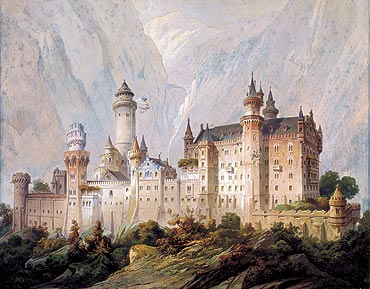These three postcards are from my private collection. Unfortunately they are not posted, but I really like the pictures which give me a glimpse to some of Korea's traditions.The first postcard is showing five beautiful traditional dancers in front of the 10 storey pagoda in Gyeongbokgung Palace. Gyeongbokgung (Hangul: 경복궁; hanja: 景福宫), also known as Gyeongbokgung Palace or Gyeongbok Palace, was the main royal palace of the Joseon dynasty. Built in 1395, it is located in northern Seoul, South Korea. The largest of the Five Grand Palaces built by the Joseon dynasty, Gyeongbokgung served as the home of Kings of the Joseon dynasty, the Kings' households, as well as the government of Joseon.
Showing posts with label Palace. Show all posts
Showing posts with label Palace. Show all posts
Oct 31, 2015
Nongak | South Korea
These three postcards are from my private collection. Unfortunately they are not posted, but I really like the pictures which give me a glimpse to some of Korea's traditions.The first postcard is showing five beautiful traditional dancers in front of the 10 storey pagoda in Gyeongbokgung Palace. Gyeongbokgung (Hangul: 경복궁; hanja: 景福宫), also known as Gyeongbokgung Palace or Gyeongbok Palace, was the main royal palace of the Joseon dynasty. Built in 1395, it is located in northern Seoul, South Korea. The largest of the Five Grand Palaces built by the Joseon dynasty, Gyeongbokgung served as the home of Kings of the Joseon dynasty, the Kings' households, as well as the government of Joseon.
Labels:
Palace,
South Korea,
Tradition,
Traditional Costume,
Traditional Object
Oct 7, 2011
Alps
The Alps (German: Alpen; Italian: Alpi; French: Alpes; Greek: Αλπεις; Occitan: Aups/Alps; Romansh: Alps; Slovene: Alpe) is one of the great mountain range systems of Europe, stretching from Austria and Slovenia in the east through Italy, Switzerland, Liechtenstein and Germany to France in the west.
The highest mountain in the Alps is Mont Blanc, at 4,810.45 metres (15,782 ft), on the Italian–French border. All the main peaks of the Alps can be found in the list of mountains of the Alps and list of Alpine peaks by prominence. The English name Alps was taken via French from Latin Alpes, which formerly was believed to be ultimately cognate with Latin albus ("white"). Few scholars share this opinion today. The German Albe, Alpe or Alp (f., Old High German alpâ, plural alpûn), the Occitan Alp/Aup and the French Alpage or Alpe in the singular mean "alpine pasture", and only in the plural may also refer to the mountain range as a whole. [wikipedia]
Jul 29, 2011
Royal Castle Linderhof
These two postcards are from my mother's collection. They show Royal Castle Linderhof in Germany. On the first one, you can see King Ludwig II, who built it.
Linderhof Palace (German: Schloss Linderhof) is in Germany, near Oberammergau in southwest Bavaria near Ettal Abbey. It is the smallest of the three palaces built by King Ludwig II of Bavaria and the only one which he lived to see completed. Ludwig already knew the area around Linderhof from his youth when he had accompanied his father King Maximilian II of Bavaria on his hunting trips in the Bavarian Alps. When Ludwig II became king in 1864 he inherited the so-called Königshäuschen from his father, and in 1869 began enlarging the building. In 1874 he decided to tear down the Königshäuschen and rebuild it on its present-day location in the park. At the same time three new rooms and the staircase were added to the remaining U-shaped complex, and the previous wooden exterior was clad with stone façades. The building was designed in the style of the second rococo-period. Between 1863 and 1886 a total of 8,460,937 marks was spent constructing Linderhof.
Mar 27, 2011
Schloss Nymphenburg
These three postcards show Schloss Nymphenburg in Germany. I have bought them many years ago!

Nymphenburg Palace owes its foundation as a summer residence to the birth of the long-awaited heir to the throne, Max Emanuel, who was born in 1662 to the Bavarian Elector Ferdinand Maria and his wife, Henriette Adelaide of Savoy, after some ten years of marriage.
Feb 23, 2011
New Hohenschwangau Castle
I bought these cards many years ago. I remember only a few things about this magnificent castle. The thing that stays more vivid in my mind is the huge kitchen!!
History of the origins of Neuschwanstein Castle
Ludwig II, King of Bavaria since 1864, addressed the following lines to the man he so greatly admired, Richard Wagner:
«It is my intention to rebuild the old castle ruin of Hohenschwangau near the Pöllat Gorge in the authentic style of the old German knights' castles, and I must confess to you that I am looking forward very much to living there one day (in 3 years); there will be several cosy, habitable guest rooms with a splendid view of the noble Säuling, the mountains of Tyrol and far across the plain; you know the revered guest I would like to accommodate there; the location is one of the most beautiful to be found, holy and unapproachable, a worthy temple for the divine friend who has brought salvation and true blessing to the world. It will also remind you of "Tannhäuser" (Singers' Hall with a view of the castle in the background), "Lohengrin'" (castle courtyard, open corridor, path to the chapel); this castle will be in every way more beautiful and habitable than Hohenschwangau further down, which is desecrated every year by the prose of my mother; they will take revenge, the desecrated gods, and come to live with Us on the lofty heights, breathing the air of heaven».
 |
| Ideal design for Neuschwanstein Castle by Christian Jank, 1869 |
Subscribe to:
Posts (Atom)








